GeForce 7900 GS Group Test
September 21, 2006 | 11:03

Battlefield 2
Publisher: Electronic ArtsBattlefield 2 features an all-new game engine based on the DirectX 9.0 API. There is no Shader Model 3.0 support, but the majority of hardware will use a Shader Model 2.0++ mode that includes support for Normal Maps, Parallax Mapping, Full-Resolution Dynamic Shadowing, Post Processing and Fog.
The game will look the same on both NVIDIA and ATI hardware, so there is no advantage of choosing one over the other in image quality related circumstances. The only major difference is that Ultra Shadow 2 is utilised on NVIDIA's hardware, while the shadowing on ATI hardware is done using a slightly different technique.
We patched the game to version 1.4 and then played three five-minute segments of the 'Strike at Karkand' map, reporting the median frame rate. We found that there was no ready way to duplicate testing situations manually in this game, so we felt that taking a typical slice of action from the game was the best way to report our findings. We controlled anti-aliasing from inside the game, while anisotropic filtering was set to 8xAF when the 'Texture Filtering' option was set to 'High'.
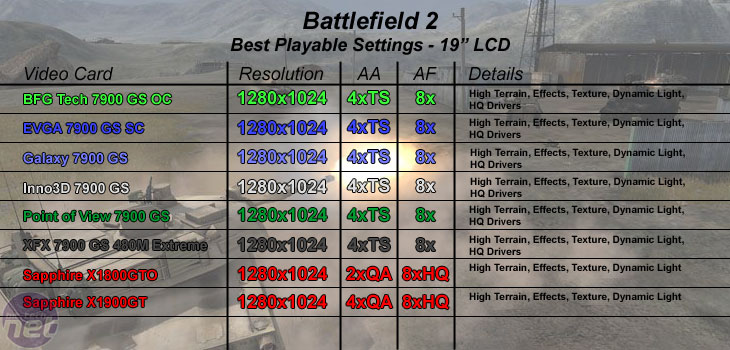
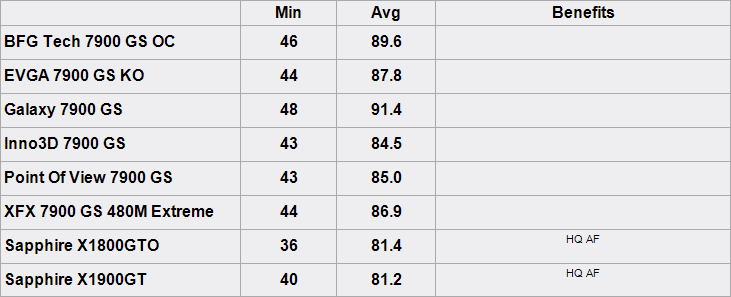
The Radeon X1900GT delivered the same gaming experience as the six GeForce 7900 GS cards, but with slightly lower frame rates. That wasn't a problem though, because the game was still incredibly smooth - even in online scenarios. We tried 6xAA and while it was smooth in our offline testing scenario, it wasn't smooth when we tried venturing online. The Radeon X1900GT stood out when it came to texture filtering because of ATI's high quality anisotropic filtering algorithm that allows for much sharper textures at all angles.
Finally, the Radeon X1800GTO was the only video card where we had to lower the settings from 4xAA 8xAF in order to attain acceptable gameplay at 1280x1024. The highest playable settings achieved by this card were 2xAA 8xHQ AF with quality adaptive anti-aliasing enabled too. Because there was so little difference between these cards at 1280x1024, we decided to venture out and investigate performance at higher resolutions that you might use on a CRT - 1600x1200 seemed like a good place to start.
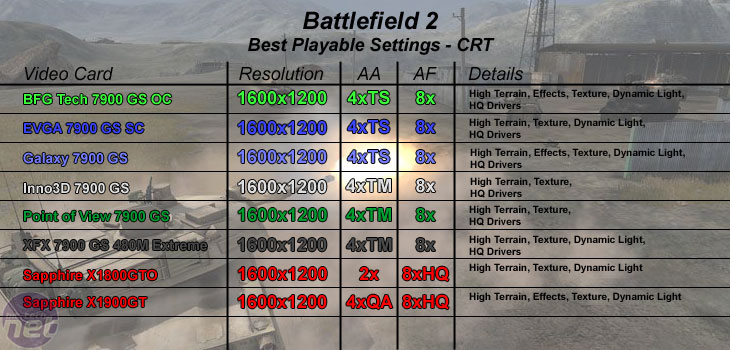
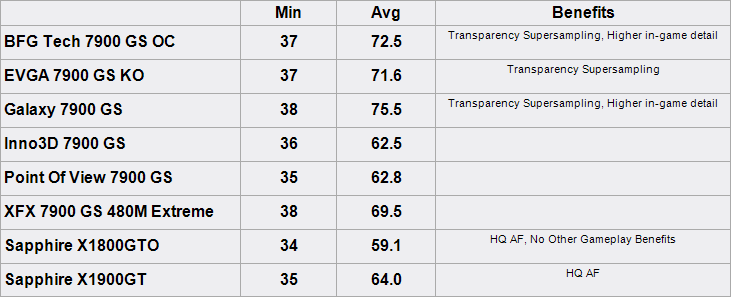
The X1900GT had an edge when it came to texture filtering, but the frame rate advantage was in favour of the two overclocked GeForce 7900 GS cards. With the EVGA 7900 GS KO, we had to lower the effects quality down to medium, as we experienced some occasional hitches where the game would momentarily freeze up for a second or so.
XFX's 480M Extreme GeForce 7900 GS was playable with the same in-game quality settings as EVGA's 7900 GS KO, but we had to lower the transparency anti-aliasing quality from supersampled to multisampled in order to maintain comparably smooth gameplay. We had to reduce the in-game quality settings further on the two reference clocked GeForce 7900 GS cards from Inno3D and Point Of View in order to keep a smooth gameplay experience - we had to reduce dynamic light quality to medium.
Finally, the Sapphire Radeon X1800GTO was playable with 2xAA 8xHQ AF with the same in-game quality settings as the XFX GeForce 7900 GS 480M Extreme. Texture filtering was a higher quality on the X1800GTO, but anti-aliasing quality was firmly in favour of XFX's card. In fact, we'd probably take the extra anti-aliasing quality over the improved dynamic light quality.

MSI MPG Velox 100R Chassis Review
October 14 2021 | 15:04

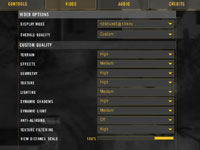






Want to comment? Please log in.